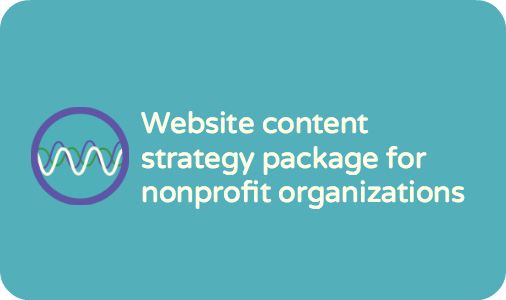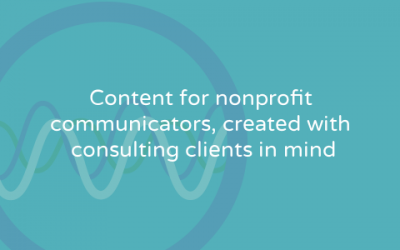Does your non-profit have a ‘go-to’ tactic – and you need to get out of the rut? Is your organization’s default set to ‘brochure’, ‘buckslip’ or ‘poster’? Or has new media caused a shift to ‘e-blast’, ‘microsite’ or [shudder] ‘viral video’?
There isn’t anything inherently wrong with any of these tactics (except for thinking that you can plan for a video to go viral). But when non-profits fall into the trap of jumping straight to tactics, they fail to consider what might be the best way to reach a specific audience. Jumping to a tactic is an indication of not having thought about the audience for the communication at all.
For non-profit communicators working with limited budgets, it’s worth slowing down to think about the right tactics to meet your communications objectives. Seemingly inexpensive, cheap, or even so-called free tactics still cost your organization in terms of valuable human resources. And if you’re not using the right tools for the job, that’s money and time wasted anyway!
How to break the ‘go-to’ habit
The first step is to identify why this default approach might be happening:
- Culture: this is how communications have always been done in your organization. Something needs to be communicated, you get asked for a brochure.
- Time: you are a maxed-out communications pro, struggling to deliver on a million projects. If they need a poster, you can deliver it and cross that item off your to-do list.
- Resources: you have zero budget, but internal web support. Of course an e-blast is the right tactic – it’s ‘free’!
- Lack of information: the request/directive for the poster comes from internal customers without training or understanding of marketing communications.
- Other reason?
Overcome this auto-pilot mode and make the most of your efforts
Many additional posts could be dedicated just to the topic of understanding your audience, communications objectives and blending this information to establish the right tactics. But as a starting point, ensure that you (or your internal customers) are answering at least these five questions before deciding on any particular tactic.
- What is the objective for this communication?
- Who is your audience?
- What do you want them to know?
- Where can you reach them (place and time where/when they will be receptive to your message)?
- How will you measure the success of this communication?
Use the insights gleaned to guide you through an informed decision-making process for every communication. Give yourself the opportunity to be creative, imaginative and bold.
What is your communications rut?
Does your non-profit have a ‘go-to’ communications tactic? Why is this happening? How can you break free from bad communications habits and improve the effectiveness of your efforts?


